On Petrogradsky Island
Peter and Paul Fortress
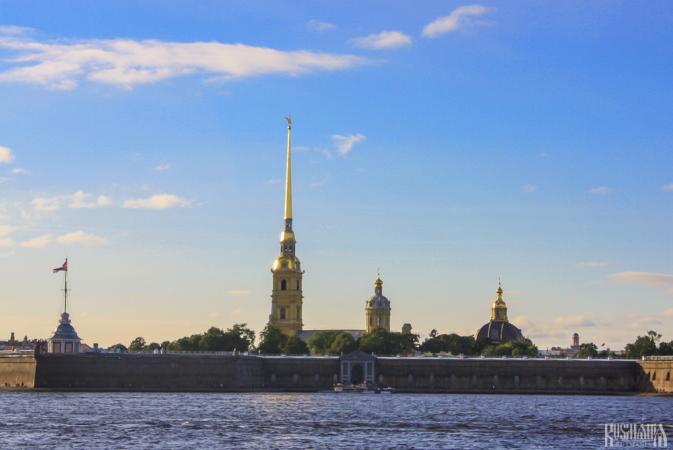
The very core of St Petersburg is considered to be the Peter and Paul (Petropavlovskaya) Fortress which is the original fortress founded by Peter the Great in 1703 marking the beginning of his new northern capital. It was established on Zayachy Island (Hare Island) to protect the proposed new capital from Sweden which was at war with Russia at the time. The fortress was rebuilt in stone between 1706 and 1740 according to designs by architect Domenico Trezzini.
Over the next centuries the fortress was used as both a military base and a prison for important political prisoners. Famous inmates include: Tsarevich Aleksey (the son of Peter the Great), the Decembrists, Fyodor Dostoevsky, Nikolai Chernyshevsky, Maksim Gorky, Lev Trotsky and Tito. During the February Revolution of 1917 the prison was liberated which led to it becoming known as the Russian Bastille. The Provisional Government then imprisoned Tsarist officers in the fortress. The October Revolution saw the fortress falling to the Bolsheviks who then used it to fire on the Provisional Government in the Winter Palace. In 1924 the complex was turned into a museum, which is now run as a branch of the St Petersburg History Museum. A cannon is fired from the fortress daily at noon. Just to the south of the fortress is a beach which, surprisingly, is used year round.
Entrance to the fortress itself is free, but tickets to the various exhibitions here need to be bought in the small building close to Ss Peter and Paul's Cathedral.
Ss Peter and Paul's Cathedral
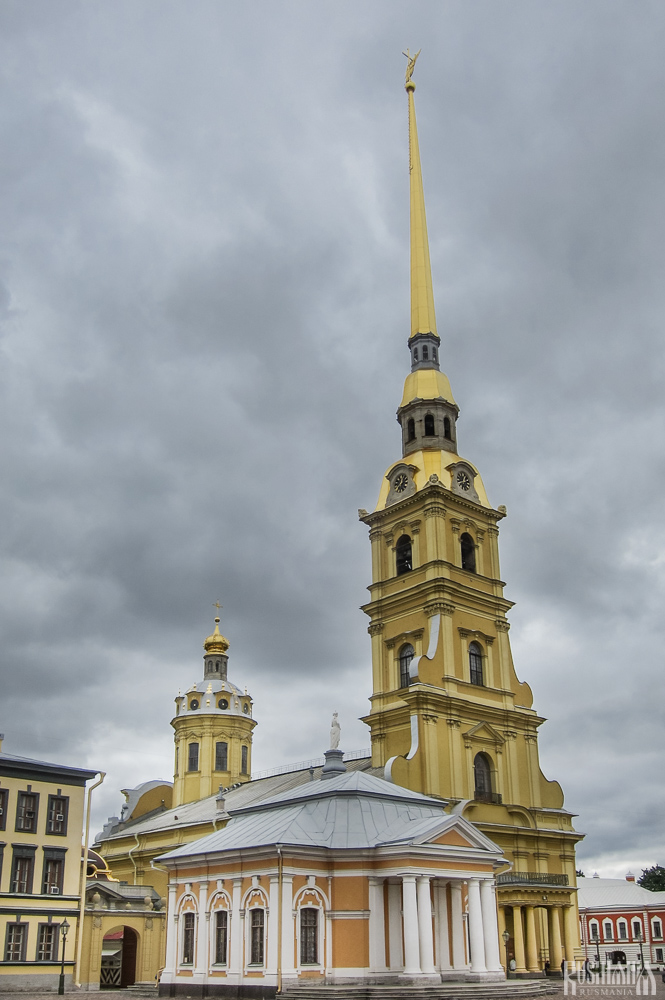
The main sight within the fortress is Ss Peter and Paul's Cathedral which is the oldest landmark in St Petersburg. It was built between 1712 and 1733 and designed by the architect Domenico Trezzini. The cathedral's most striking feature is its 123 metre spire topped with an angel, which is now one of the most recognisable symbols of St Petersburg. In 1919 the cathedral was closed and it became a museum in 1924 which it remains today, although it is now shared with the Russian Orthodox Church which occasionally holds services here. A visit here is definitely a highlight to see the resting places of the Russian emperors and empresses.
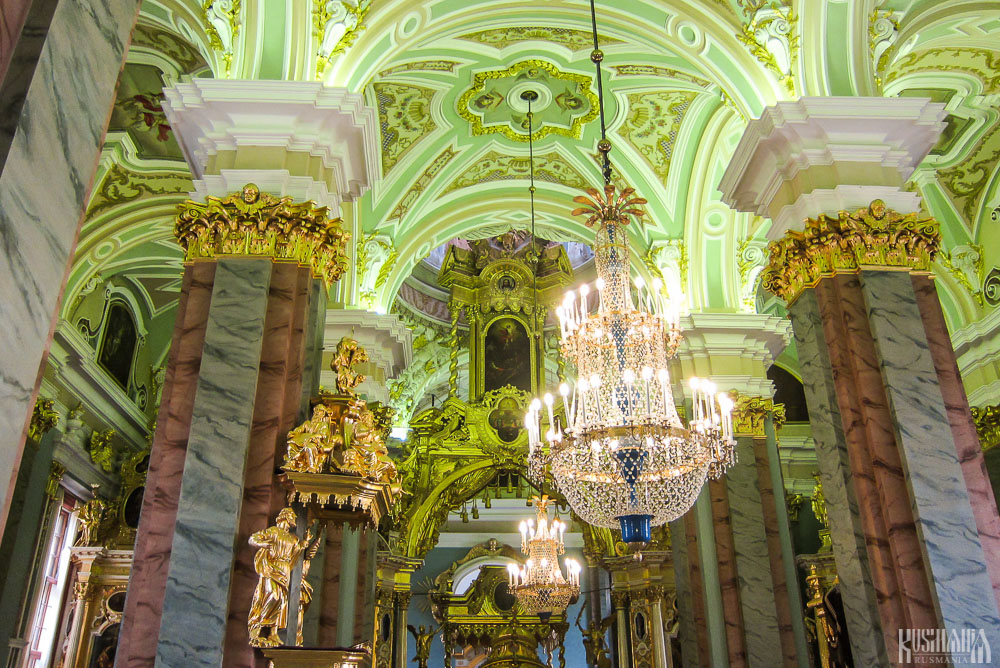
Peter the Great founded the cathedral to serve as an imperial mausoleum replacing the Archangel Cathedral in the Moscow Kremlin where grand princes and tsars were buried. Practically all subsequent Russian monarchs are buried in Ss Peter and Paul's Cathedral; the two exceptions are Emperor Peter II, who died in Moscow and was therefore buried in Archangel Michael's Cathedral in the Moscow Kremlin, and Emperor Ivan VI, who was killed in prison in Shlisselburg and was presumably buried somewhere there (although the exact place of burial is not known).
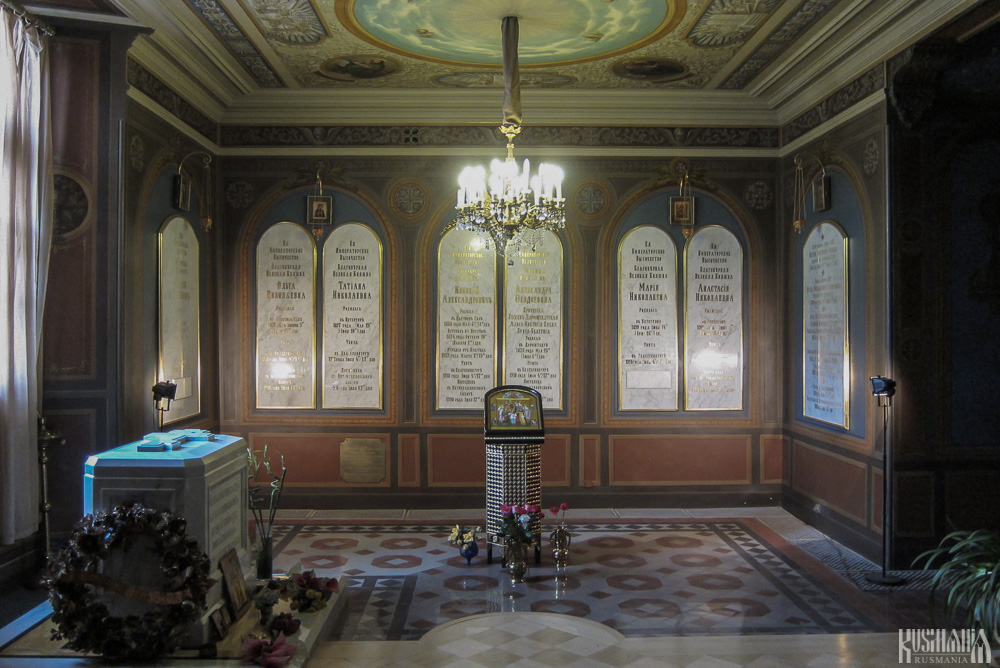
The remains of Emperor Nicholas II (the last tsar) along with his wife Aleksandr Fyodorovna and daughters Olga, Tatiana and Anastasia were interred in the cathedral in 1998 after they were conclusively identified. Finally Nicholas II's mother Empress Maria Fyodorovna was reburied in the cathedral next to her husband Alexander III in 2006, having previously been buried in her native Denmark where she died in 1928.
Grand Ducal Mausoleum
Just behind Ss Peter and Paul's Cathedral is the Grand Ducal Mausoleum which was built between 1896 and 1908 to serve as the last resting place for the grand dukes, grand duchesses, princes and princesses of the house of Romanov. The title of grand duke (veliky knyaz) and grand duchess (velikaya knyagina) were reserved for children and grandchildren of emperors, great-grandchildren bore the lesser title of prince (knyaz) or princess (knyagina). In all, 17 members of the house of Romanov are buried here. In 1995 the bodies of Grand Duke Kirill Vladimirovich (who styled himself as Emperor Cyril) and his wife Viktoria Fyodorovna (Princess Victoria Melita of Saxe-Coburg-Gotha) were transferred here from Coburg where they were previously buried. Before this their son Vladimir Kirillovich was buried here in 1992. The last burial to take place here was of Princess Leonida Bagration of Mukhrani (wife of Vladimir Kirillovich and mother of the current claimant of the Russian throne - Maria Vladimirovna, Grand Duchess of Russia). The interior of the Grand Ducal Mausoleum is not open to the public.
St Petersburg Mint
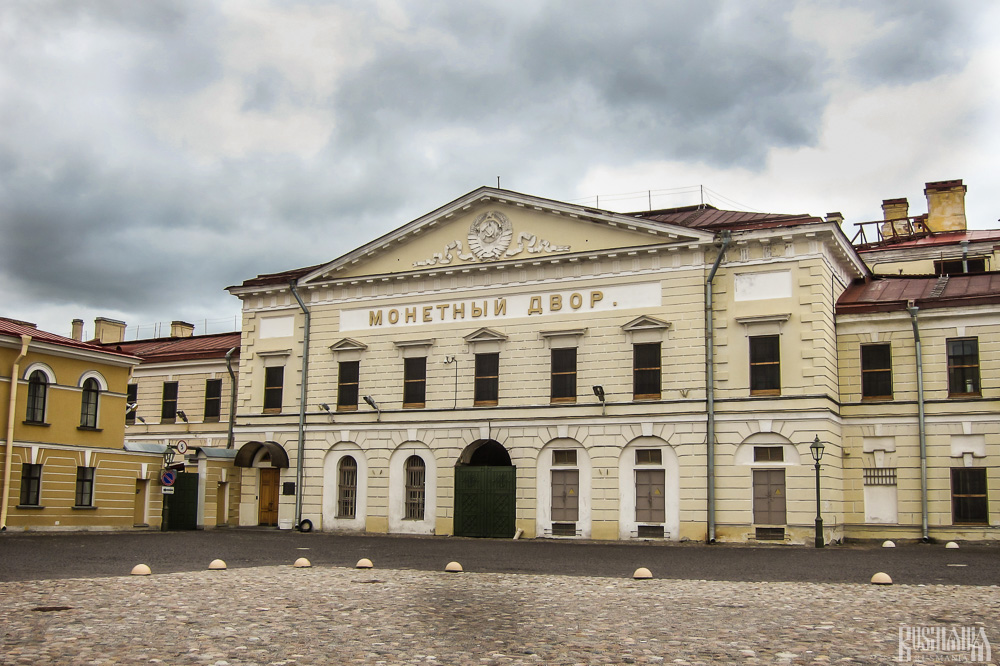
On the other side of Sobornaya Ploschad (Cathedral Square) from the cathedral is the building of the St Petersburg Mint which is one of the world's largest mints. It was founded by Peter the Great in 1724 and to this day is still being used for its original purpose, and specialises in producing special editions of coins and medals.
Trubetskoy Bastion Prison Museum
The Trubetskoy Bastion Prison was built within the fortress between 1870 and 1872 and was immediately put to use to hold political prisoners. After the February Revolution the prison was used to hold ministers of the imperial government and then after the October Revolution to hold members of the Provisional Government. It was officially closed in 1918 but in reality still used until 1921. Today it is a museum and holds exhibitions on its history and procedures, as well as reconstructions of cells from various periods.
Commandant's House
The house within the fortress which was previously used as a residence for the fortress' commandant is now used to hold a permanent exhibition on the history of St Petersburg from 1703 to 1918. Each hall is dedicated to separate themes such as trade and banking, transport, costumes, cuisine, modernity and cinema.
Emperor Peter the Great Monument
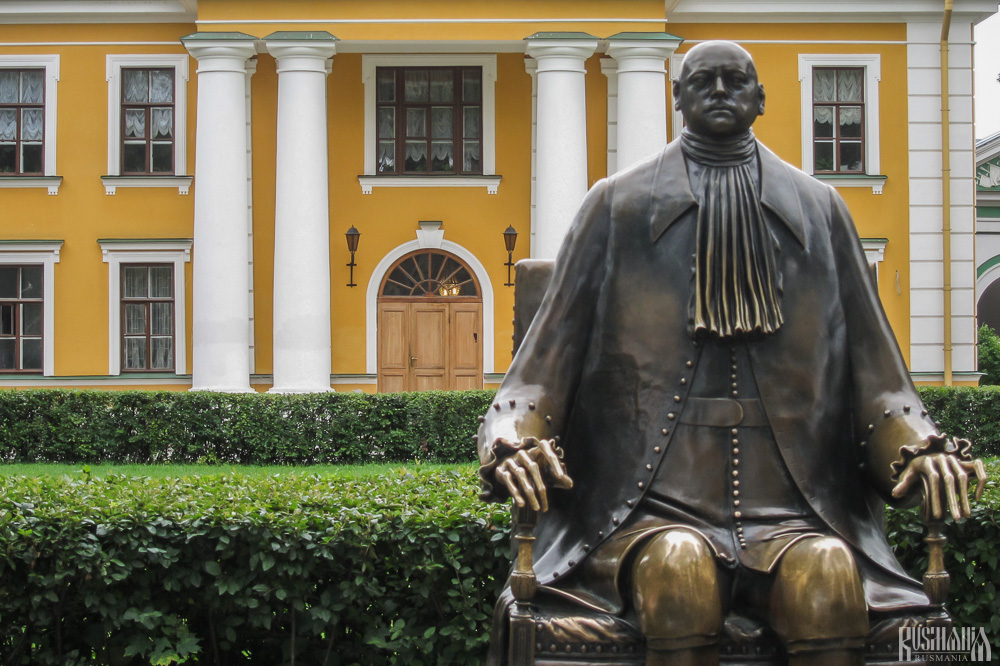
The Peter and Paul Fortress is also home to St Petersburg's most unusual statue of Emperor Peter the Great. The monument was unveiled in 1991 and became the fourth major statue of Peter the Great in the city (after the Bronze Horseman, the monument outside Mikhailovsky Castle and the Tsar-Carpenter). It is the work of sculptor Mikhail Shemyakin and caused quite a stir when it was unveiled due to its depiction of the emperor as a skinny giant with a small round head sat on a throne, which has been described as resembling an electric chair. Nevertheless it has become an interesting landmark of St Petersburg.
Engineers House
The fortress' Engineer House was built between 1748 and 1749 to house a workshop for the engineering team which were responsible for carrying out repairs on the fortress. Today it holds the Streets of Time exhibition where houses of the 18th, 19th and early 20th centuries have been recreated.
Curtain Wall Exhibitions
More exhibitions are to be found in the fortress' curtain walls. The northern Nikolskaya Curtain Wall holds a collection of furniture, the southern Nevskaya Curtain Wall has exhibits on the History of the Peter and Paul Fortress and on the Printing House, and the eastern Petrovskaya Curtain Wall exhibits chinaware.
| Location | Zayachy Island |
|---|---|
| Metro | Gorkovskaya, Sportivnaya |
| Website | http://www.spbmuseum.ru/ |
| Clock | 10:00 - 18:00 (some exhibitions close earlier). Closed on Wednesdays. |